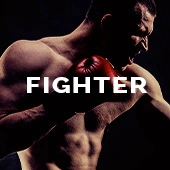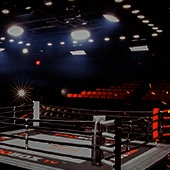Nostalgia is big business right now. With no new action to watch, boxing fans are plunging into the archives, seeking out the greats of the past, comparing them with the best we have today. Maybe it is the withdrawal symptoms from more than a month on lockdown, but some people are becoming delusional.
For some, fantasy fights aren’t enough. They want the real thing. It took only a few seconds of a video of a 53-year-old Mike Tyson on the pads for some to suggest he could get back in the ring and the offers started coming in. It’s not only Tyson, there has been talk of Evander Holyfield and even Riddick Bowe returning. It’s fun to look back, but this talk is dangerous.
The last thing any of those three needs now is someone punching them in the head. And while the talk is of “exhibitions”, don’t expect it to be one of those exhibitions that Muhammad Ali boxed during his latter career, when a young opponent was told to pull his punches and let the old champ play the crowd. If Bowe, Holyfield or Tyson are in the ring together, the old rivalries will come to the fore and egos will kick in
I’m lucky, I remember these kings when they were top of their game and was ringside to see both Tyson and Holyfield in action, admittedly not at their peak.
I was there at the bitter end with Tyson, in Washington DC in 2005. Looking back, people remember the 1980s Tyson, they seldom talk about the mid-Noughties version.
Tyson spent the last round of his professional career trying to break Kevin McBride’s arm. When that failed, he quit on his stool. The post-fight press conference was one of the saddest things you could see. Tyson would have rather been anywhere else, but he was forced to be there because it was how he paid his debts. The money was gone, the ability was gone, all that was left to sell was a pound of flesh.
So, 15 years on, many of them spent living hard, how is he suddenly going to be reborn in his early 20s?
I interviewed Bowe on the phone in 2008. He was living in Kaiserslautern, in south-west Germany, training and living with Herb Smith, a former boxer, who was working for the US Army. Smith gave Bowe his bed, he was on the sofa.
Smith, a former boxer, was a nice man. He wanted the best for Bowe, who needed the money, got him in some kind of shape and feeling positive. I called one night and as Smith passed the phone over to the former champion, I overheard him say ‘it’s The Times of London, I told you it would happen’. It was a heartbreaking way to start an interview.
Bowe had one fight, in Mannheim, on a Wladimir Klitschko undercard. It was supposed to be the start of the big comeback, but after eight desperate rounds, it was the end of the road.
Reality sunk in. However special the memories may be, however much Bowe dreamed that he still could do it, those great memories had been of a different Bowe, more than a decade younger.
It pretty much went unnoticed, but January was the 50th anniversary of The Super Fight, possibly the first and greatest fantasy fight in history, between Ali, who was then banned from the ring, and the long retired Rocky Marciano.
Back in the days before computer special effects, the pair had to choreograph the fights scenes. No great problem for Ali, but Marciano was overweight and balding. They filmed 75 rounds, some of which had to be stopped because Ali knocked off Marciano’s wig. Then a super-computer was supposed to piece it together and work out the result.
Marciano was dead by the time it was released, killed in a plane crash, but when it was screened, the old Brockton Blockbuster registered his 50th win, a result just about no one would countenance today. It seems incredible that on the cusp of the Ali, Frazier, Foreman, Norton era, there were people that were longing for a time when Marciano was banging out Roland LaStarza.
It’s the same old story, the ghosts always win. But it is not a fair fight. Whatever you have now can never compare with your greatest memories. Dream fights are not reality, though. Reality hurts.
Ron Lewis is a senior writer for Boxing Scene. He worked for nearly two decades at The Times, where he was Boxing Correspondent - covering four Olympic Games and numerous world title fights across the globe. He has written about boxing for a wide variety of publications worldwide since the 1980s.


